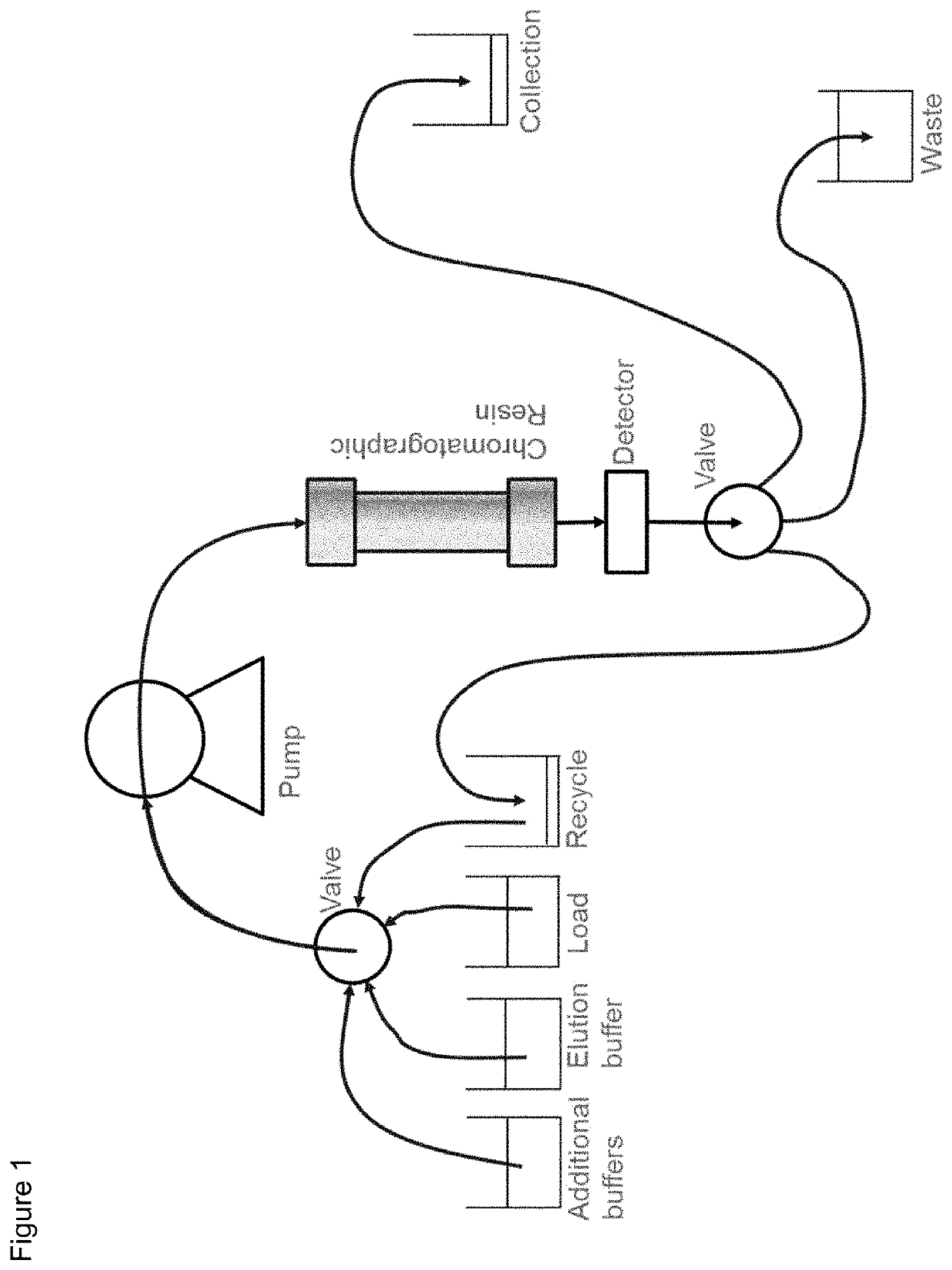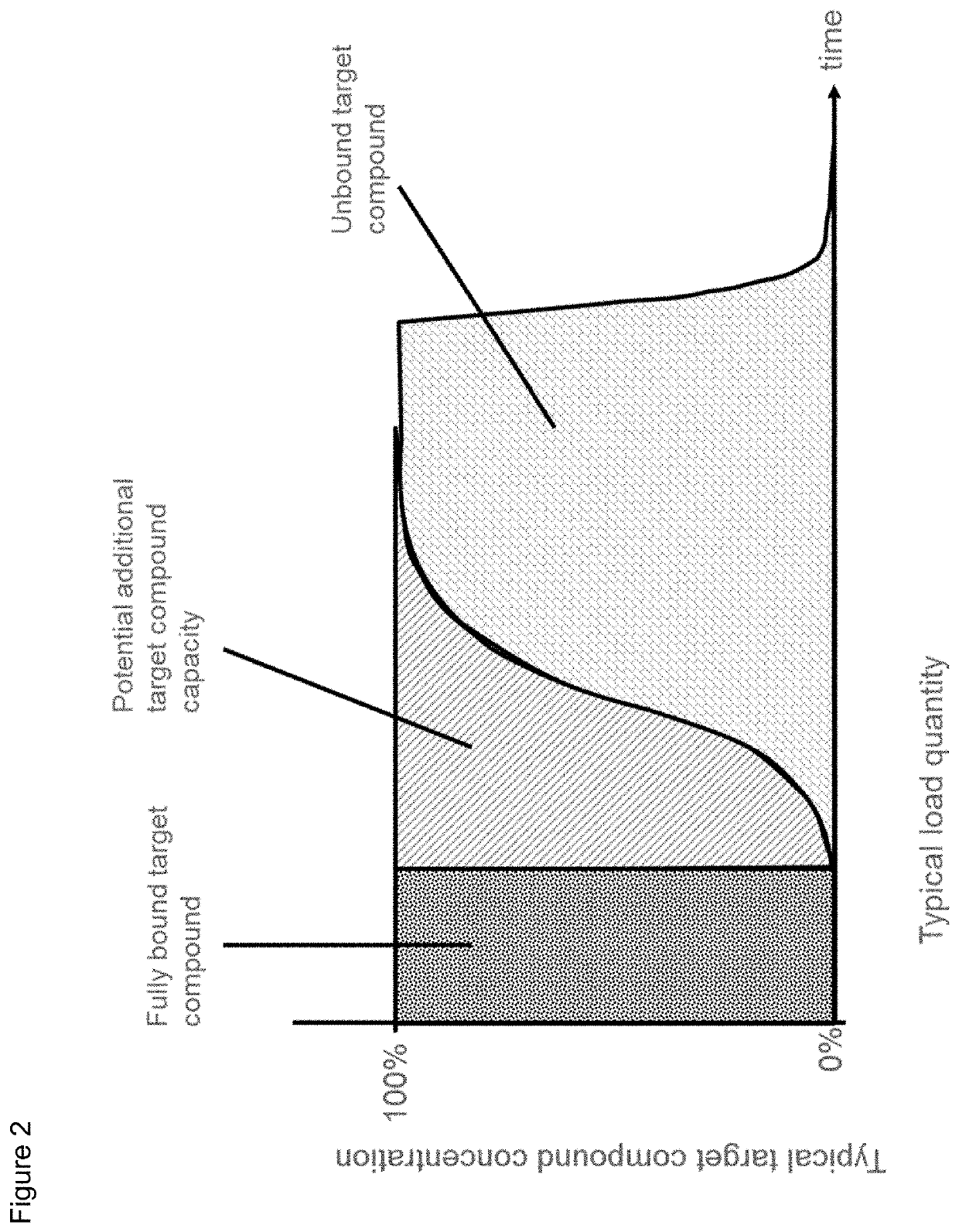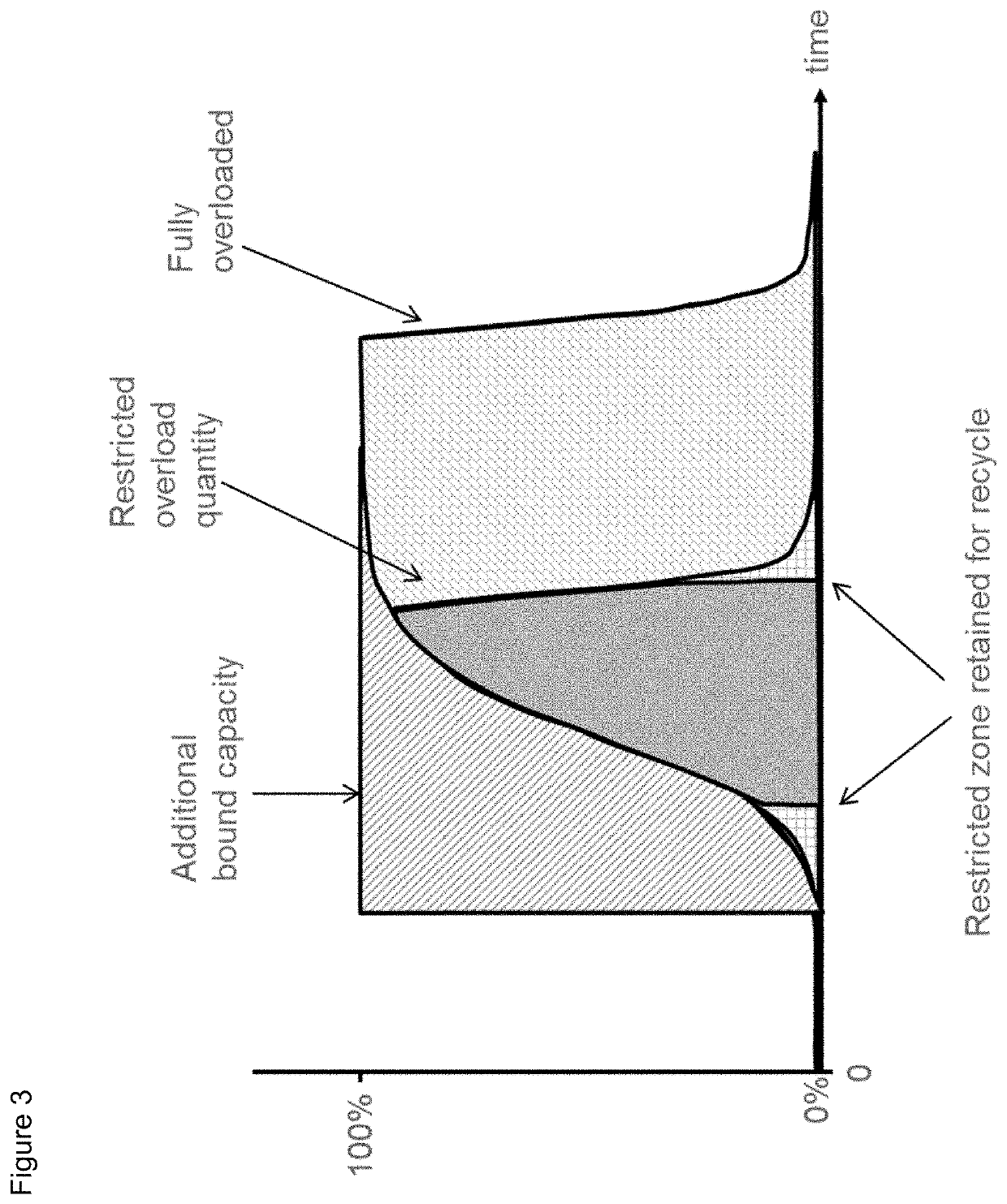Protein purification
a technology of protein purification and chromatography matrices, applied in the field of protein purification, can solve the problems of insufficient purity of protein purification, inconvenient and insufficient biological activity, so as to achieve the preservation or improvement of yield and purity of purified proteins, and the use of chromatography matrices is more efficient and cost-effective
- Summary
- Abstract
- Description
- Claims
- Application Information
AI Technical Summary
Benefits of technology
Problems solved by technology
Method used
Image
Examples
example 1
[0130]A column overload experiment was performed to establish overload performance parameters for subsequent dis-continuous operation. 2×GE HiScreen CaptoS 4.67 ml 10 cm pre-packed ion exchange columns (GE Healthcare Life Sciences Product code: 28-9269-79) were attached end to end to give a 9.313 ml 20 cm bed height cation exchange column. These were attached by capillary tubing to a GE Akta Avant purification machine (product code 28930842) Buffers were attached and primed to the inlet lines. The columns were pre stripped and cleaned of any bound material using two column volumes (CVs) of a high conductivity buffer composed of 50 mM sodium acetate, 1 M sodium chloride at pH 4.5 and a conductivity of 85 mS / cm followed by a caustic buffer composed of two CVs of 0.5 M sodium hydroxide pumped through at 900 cm / h in a down-flow direction and incubated with no flow at 20° C. for 15 minutes before being washed out to equilibrate the column's matrix using 3 CVs of 50 mM sodium acetate buff...
example 2
Methodology:
[0134]In a parallel example of the method, 2×GE HiScreen MAb Select SuRE LX 4.67 ml 10 cm pre-packed Protein A chromatography columns (GE Healthcare Life Sciences Product code: 17-5474-05) were attached end to end to give a 9.313 ml 20 cm bed height Protein A affinity column. These were attached by capillary tubing to a GE Akta PURE purification machine (product code 29-0182-24) Similar to the prior example, buffers were attached and primed to the inlet lines. The columns were similarly pre stripped and cleaned of any bound material using two column volumes (CVs) of a citric acid buffer with a pH of 2.1 and two CVs of a 0.1 M sodium hydroxide caustic buffer pumped through at 500 cm / h in a down-flow direction and incubated with no flow at 20° C. for 15 minutes. Four CVs of equilibration buffer with a composition of 50 mM sodium phosphate at a pH 7.0 and a conductivity 6.0 mS / cm was used before applying load on all chromatography cycles, a further three CVs of the same buf...
example 3
Methodology:
[0135]In a large scale example of the method, 190 ml of MAb Select SuRE LX 190 Protein A chromatography resin (GE Healthcare Life Sciences Product code: 17-5474-04) was packed to a height of 10 cm in an AxiChrom column (GE Healthcare Life Sciences Product code: 28901831) and attached by tubing to an AKTA pilot purification machine (GE Healthcare Life Sciences Product code 29-0086-12). Containers with buffers were attached and primed to the inlet lines as described in the previous examples. The columns were pre stripped and cleaned of any bound material using two column volumes (CVs) of a citric acid buffer with a pH of 2.1 and two CVs of a 0.1 M sodium hydroxide caustic buffer pumped through at 150 cm / h in a down-flow direction and incubated with no flow at 20° C. for 15 minutes as described in the previous examples. Five CVs of equilibration buffer with a composition of 50 mM sodium phosphate at a pH 7.0 and a conductivity 6.0 mS / cm was used before applying load on all ...
PUM
| Property | Measurement | Unit |
|---|---|---|
| bed height | aaaaa | aaaaa |
| height | aaaaa | aaaaa |
| height | aaaaa | aaaaa |
Abstract
Description
Claims
Application Information
 Login to View More
Login to View More - R&D
- Intellectual Property
- Life Sciences
- Materials
- Tech Scout
- Unparalleled Data Quality
- Higher Quality Content
- 60% Fewer Hallucinations
Browse by: Latest US Patents, China's latest patents, Technical Efficacy Thesaurus, Application Domain, Technology Topic, Popular Technical Reports.
© 2025 PatSnap. All rights reserved.Legal|Privacy policy|Modern Slavery Act Transparency Statement|Sitemap|About US| Contact US: help@patsnap.com



